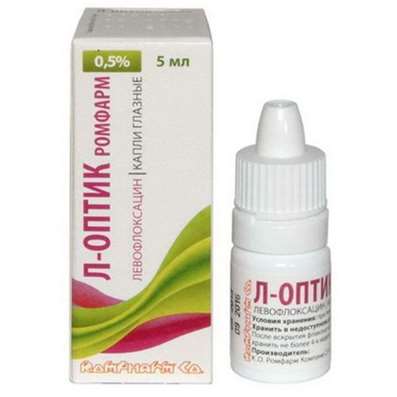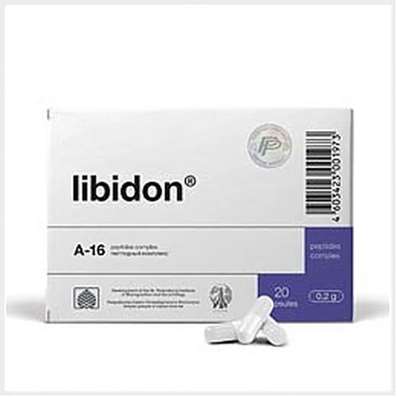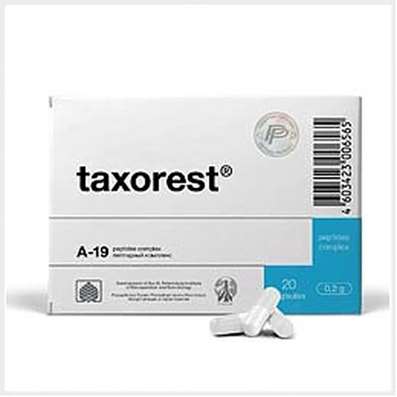Instruction for use: Lacvel
I want this, give me price
Dosage form: film coated tablets
Active substance: Quetiapine*
ATX
N05AH04 Quetiapine
Pharmacological group:
Neuroleptics
The nosological classification (ICD-10)
F20 Schizophrenia: Schizophrenic conditions; Exacerbation of schizophrenia; Schizophrenia; Chronic schizophrenia; Dementia praecox; Bleuler's disease; Psychotic discordant; Dementia early; The febrile form of schizophrenia; Chronic schizophrenic disorder; Psychosis of the schizophrenic type; Acute form of schizophrenia; Acute schizophrenic disorder; Cerebral Organic Insufficiency in Schizophrenia; Acute attack of schizophrenia; Schizophrenic psychosis; Acute schizophrenia; Sluggish schizophrenia; Sluggish schizophrenia with apathoabulic disorders; Acute stage of schizophrenia with excitation
F31.1 Bipolar affective disorder, current episode of mania without psychotic symptoms: Mania in bipolar disorders
F31.2 Bipolar affective disorder, current episode of mania with psychotic symptoms: Manic episode of bipolar disorder; Mania in bipolar disorders
Composition
Tablets covered with a film membrane 1 tab.
active substance:
quetiapine fumarate 28.784 mg; 115.136 mg; 230.272 mg
(equivalent to 25, 100 and 200 mg of quetiapine, respectively)
auxiliary substances: lactose monohydrate - 7,24 / 28,96 / 57,92 mg; MCC - 8,776 / 35,104 / 70,208 mg; calcium hydrogen phosphate dihydrate - 4.2 / 16.8 / 33.6 mg; giprolose - 2.4 / 9.6 / 19.2 mg; sodium carboxymethyl starch - 4.2 / 16.8 / 33.6 mg; talc - 2.9 / 11.6 / 23.2 mg; silicon dioxide colloidal - 0.9 / 3.6 / 7.2 mg; magnesium stearate - 0.6 (2.4) 4.8 mg
film sheath for tablets 25 mg: Opadry II pink 31F34566 (lactose monohydrate 36%, hypromellose 28%, titanium dioxide (E171) 23.7%, macrogol 4000-10%, dye iron oxide red 1%, dye " Sunny sunset ╗yellow (┼110) - 1,3%) - 1,8 mg
film sheath for tablets 100 mg: Opadry II yellow 31F32561 (lactose monohydrate 36%, hypromellose 28%, titanium dioxide (E171) 23.18%, macrogol 4000-10%, iron oxide yellow dye 2.82%) - 7.2 mg
film coating for tablets 200 mg: Opadry II white OY-L-28900 (lactose monohydrate 36%, hypromellose 28%, titanium dioxide (E171) 26%, macrogol 4000 10%) 14.4 mg
Description of dosage form
Tablets, 25 mg: pink with a brownish tinge round, biconvex, covered with a film shell, with embossed "QE" on one side and "25" on the other.
Tablets, 100 mg: yellow with a brownish tinge, round, biconvex, covered with a film shell, with embossed "QE" on one side and "100" on the other.
Tablets, 200 mg: white round, biconvex, film-coated, with embossed "QE" on one side and "200" on the other.
For all dosages: a cross-sectional view is a homogeneous mass of white or almost white.
Pharmachologic effect
Pharmacological action - antipsychotic, neuroleptic.
Pharmacodynamics
Atypical antipsychotic drug (neuroleptic), which interacts with various types of neurotransmitter receptors. Has a higher affinity for serotonin (5-HT2) receptors than for dopamine receptors (D1 and D2) of the brain. It also has a higher affinity for histamine and α1-adrenoreceptors and a smaller affinity for α2-adrenergic receptors. There was no significant affinity for quetiapine for cholinergic muscarinic and benzodiazepine receptors.
Quetiapine causes a selective decrease in the activity of mesolimbic A10 dopaminergic neurons in comparison with A9 nigrostri- neal neurons involved in motor function. Do not cause a prolonged increase in the concentration of prolactin in the blood plasma. Clinical studies have shown efficacy for both positive and negative symptoms of schizophrenia.
The effect of quetiapine on the receptors of 5-HT2 and D2 continues up to 12 hours after taking the drug.
Quetiapine and some of its metabolites have a weak inhibitory activity of the cytochrome P450 enzymes 1A2, 2C9, 2C19, 2D6 and 3A4, but only at concentrations exceeding 10-50 times the concentration observed with commonly used effective dosage of 300-450 mg / day.
Indications for the drug Lacvel
schizophrenia;
manic episodes of moderate and severe degree in the structure of bipolar disorder. Does not prevent the development of manic and depressive episodes.
Contraindications
hypersensitivity to any of the components of the drug;
concurrent use of cytochrome P450 3A4 inhibitors (eg, HIV protease inhibitors, azole antifungal agents, erythromycin, clarithromycin, nefazodone);
children's age (effectiveness and safety not established);
pregnancy and lactation (efficacy and safety not established).
With caution: arterial hypotension; heart failure; cardiac hypertrophy; cardiovascular and cerebrovascular diseases or other conditions predisposing to arterial hypotension; elderly age; liver failure; epilepsy; convulsive seizures in the anamnesis; simultaneous administration of drugs that extend the QT-interval; patients with congenital QT-interval increase or family predisposition to its increase; hypocalcemia; hypomagnesemia; risk factors for thromboembolism of venous vessels.
Side effects
Very often - more than 1/10; often more than 1/100 and less than 1/10; infrequently - more than 1/1000 and less than 1/100; rarely - more than 1/10000 and less than 1/1000; very rarely - less than 1/10000.
From the side of the central nervous system: very often - dizziness, drowsiness, headache; often syncope; infrequently - convulsions; rarely - tardive dyskinesia; with an unidentified frequency, there is anxiety, hostility, agitation, insomnia, akathisia, tremor, depression, paresthesia.
From the CVS: often - tachycardia, orthostatic hypotension, cases of thromboembolism of venous vessels, incl. thromboembolism of pulmonary vessels and deep veins.
On the part of the respiratory system: pharyngitis, rhinitis.
From the digestive system: often - dry mouth, constipation, indigestion; rarely - jaundice, nausea, vomiting, abdominal pain; very rarely - hepatitis.
From the blood and lymphatic system: often - leukopenia; infrequently - eosinophilia; very rarely - neutropenia.
Laboratory indicators: often - increased activity of serum transaminases (AJIT, ACT); infrequently - increase in GGT activity; an increase in the concentration of total cholesterol and triglycerides in the blood serum.
From the endocrine system: very rarely - hyperglycemia, diabetes mellitus.
Allergic reactions: infrequently - hypersensitivity; angioedema, Stevens-Johnson syndrome, skin rash.
From the side of the reproductive organs: rarely - priapism.
Other: often - moderate asthenia, swelling, weight gain; rarely - malignant neuroleptic syndrome, back pain, chest pain, subfebrile condition, myalgia, dry skin, weakening of vision.
During treatment with quetiapine, there is a slight dose-dependent decrease in thyroid hormone levels, in particular total and free T4. The maximum decrease in total and free T4 is recorded during the first 2-4 weeks of quetiapine therapy without further lowering of the level of hormones during long-term treatment. There were no signs of clinically significant changes in the concentration of thyroid stimulating hormone. In almost all cases, the level of total and free T4 returned to the baseline after quetiapine therapy ceased regardless of the duration of treatment.
Quetiapine, like other antipsychotics, can cause prolongation of the QT interval, but in clinical studies, there was no correlation between the use of quetiapine and the constant QT interval elongation.
With a sharp withdrawal of the drug, there were registered cases of withdrawal syndrome, accompanied by nausea, vomiting; rarely - insomnia.
Interaction
The cytochrome P450 isoenzyme CYP3A4 is the key enzyme involved in the metabolism of quetiapine. With simultaneous administration of drugs with a strong inhibitory effect on the cytochrome P450 isoenzyme CYP3A4 (antifungal agents of the azole group and macrolide antibiotics), the concentration of quetiapine in plasma can be significantly increased. Thus, with simultaneous administration of quetiapine and ketoconazole, the increase in quetiapine AUC is 5-8 times. For this reason, such combinations of drugs are contraindicated. Also, during the treatment with Lacvel, grapefruit juice is not recommended.
With simultaneous administration with drugs inducing the liver enzyme system, such as carbamazepine or phenytoin, the concentration of quetiapine in plasma decreases. Care should be taken to weigh the risk and benefit of concurrent administration of the drug Lacvel and inducers of hepatic enzymes (except for the aforementioned - barbiturates, rifampicin). It may be necessary to increase the dose of the drug Lacvel, which is carried out gradually; should also consider replacing with a drug that does not induce microsomal liver enzymes (eg valproic acid).
The pharmacokinetics of lithium preparations does not change with the simultaneous administration of the drug Lacvel.
Simultaneous administration of antipsychotic drugs - risperidone or haloperidol - does not significantly affect the pharmacokinetics of quetiapine. However, simultaneous administration of thioridazine leads to an increase in clearance of quetiapine by approximately 70%.
The pharmacokinetics of quetiapine does not change significantly with simultaneous use of cimetidine, which is an inhibitor of P450, and also when administered together with imipramine or fluoxetine. With the simultaneous administration of the drug Lakvel and preparations of valproic acid, their pharmacokinetic parameters do not change significantly.
Drugs that depress the central nervous system, incl. Ethanol increases the risk of side effects.
Caution should be exercised when administering the drug Lacvel in combination with drugs that extend the QT interval (antipsychotics, antiarrhythmics, halofantrine, mesoridazine, thioridazine, pimozide, sparfloxacin, gatifloxacin, moxifloxacin, dolasetron, mefloquine, sertindole, cisapride), as well as with drugs that cause electrolyte balance disorders (thiazide diuretics).
Dosing and Administration
Inside, 2 times a day, regardless of food intake.
Treatment of schizophrenia
The daily dose for the first 4 days of therapy is: Day 1 - 50 mg, Day 2 - 100 mg, Day 3 - 200 mg, Day 4 - 300 mg.
Starting from the 4th day, the dose is selected individually until an effective dosage is reached, usually 300-450 mg / day. Depending on the clinical effect and individual patient tolerance, the dose may vary from 150 to 750 mg / day.
The maximum recommended daily dose is 750 mg.
Treatment of manic disorders
The daily dose for the first 4 days of therapy is: the 1st day - 100 mg, the second day - 200 mg, the third day - 300 mg, the 4th day - 400 mg. In the future, by the 6th day of therapy, the daily dose of the drug can be increased to 800 mg. The increase in the daily dose should not be more than 200 mg per day.
Depending on the clinical effect and individual tolerability, the dose may vary from 200 to 800 mg / day. Usually the effective dose is from 400 to 800 mg / day.
The maximum recommended daily dose is 800 mg / day.
Special patient groups
Elderly patients. In elderly patients, the initial dose is 25 mg / day. The dose should be increased daily by 25-50 mg until an effective dose, which is usually less than in young patients.
Renal and / or hepatic insufficiency. It is recommended to start therapy with a dose of 25 mg / day, followed by a daily increase of 25-50 mg to achieve an effective dose.
Overdose
Symptoms: drowsiness and excessive sedation, tachycardia and lowering blood pressure.
Treatment: there is no specific antidote. In cases of serious intoxication - treatment is symptomatic (maintenance of the function of breathing, CVS, ensuring adequate oxygenation and ventilation).
Careful medical supervision and supervision are necessary until the patient fully recovers.
Special instructions
In the initial period of dose selection, orthostatic hypotension may be observed. In this case, you should return to the previously taken dose. Particular attention should be paid to patients with cardiovascular diseases, cerebrovascular diseases and other conditions predisposing to hypotension.
Antipsychotic drugs (antipsychotics), incl. quetiapine, contribute to the development of thromboembolic complications in patients with a predisposition to the formation of thrombi. Prior to the initiation of quetiapine therapy, all possible risk factors for the development of venous thromboembolism should be identified and appropriate measures should be taken to prevent the development of thromboembolic complications.
There was no correlation between drug intake in the recommended regimen and an increase in QT-interval. However, an increase in the QT-interval was noted with an overdose of the drug. Caution should be exercised when administering quetiapine concomitantly with drugs that extend the QTc interval, especially in the elderly, patients with congenital QT syndrome, with heart failure, cardiac hypertrophy, hypocalcemia, or hypomagnesemia, and the family's predisposition to increase the QT interval.
It should be used with caution in combination with other drugs that have a depressing effect on the central nervous system, as well as alcohol.
Care must be taken when treating patients with seizures in the anamnesis.
In the treatment of quetiapine, a malignant neuroleptic syndrome may develop, the clinical manifestations of which include hyperthermia, altered mental status, muscle rigidity, autonomic nervous system instability, and increased levels of creatine phosphokinase. In such cases, it is necessary to cancel the drug and appropriate treatment.
It should also consider the possibility of developing tardive dyskinesia with prolonged use of quetiapine. In this case, you should reduce the dose of the drug or consider the question of its cancellation.
With a sharp cancellation of treatment with high doses, the following acute reactions (withdrawal syndrome) can occur: nausea, vomiting, and rarely insomnia. There may also be an exacerbation of the symptoms of a psychotic illness and the appearance of involuntary motor disorders (akathisia, dystonia, dyskinesia). In connection with this, the elimination of the drug is recommended to be carried out gradually.
Lacvel is not intended for the treatment of patients suffering from psychosis accompanying senile dementia.
There is evidence of an increased risk of developing cerebrovascular complications in patients with senile dementia when using atypical antipsychotics.
Caution should be exercised when administering Lacvel to patients with risk factors for stroke.
The drug Lacvel contains lactose, therefore it is not prescribed for patients with lactase deficiency or impaired absorption of glucose and galactose.
Influence on the ability to drive and other mechanisms. The drug can cause drowsiness, so during the treatment, patients are not recommended to drive vehicles, work with mechanisms that are dangerous.
Release form
Tablets, film-coated, 25 mg, 100 mg, 200 mg. For 10 tab. in a blister of PVC / PVDC / aluminum foil; 6 blisters in a cardboard box.
Combi packing: according to 6 tables. dosage of 25 mg in a blister of PVC / PVDC / aluminum foil, 3 table. dosage of 100 mg in a blister of PVC / PVDC / aluminum foil, 1 tab. dosage of 200 mg in a blister of PVC / PVDC / aluminum foil; 1 blister with tablets of each dosage in a cardboard bundle.
Conditions of leave from pharmacies
On prescription.
Storage conditions of the drug Lacvel
At temperatures not higher than 25 ░ C.
Keep out of the reach of children.
Shelf life of the drug Lacvel
3 years.
Do not use after the expiry date printed on the package.

 Cart
Cart





